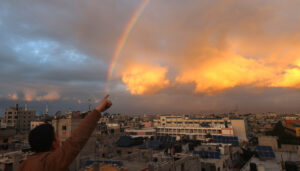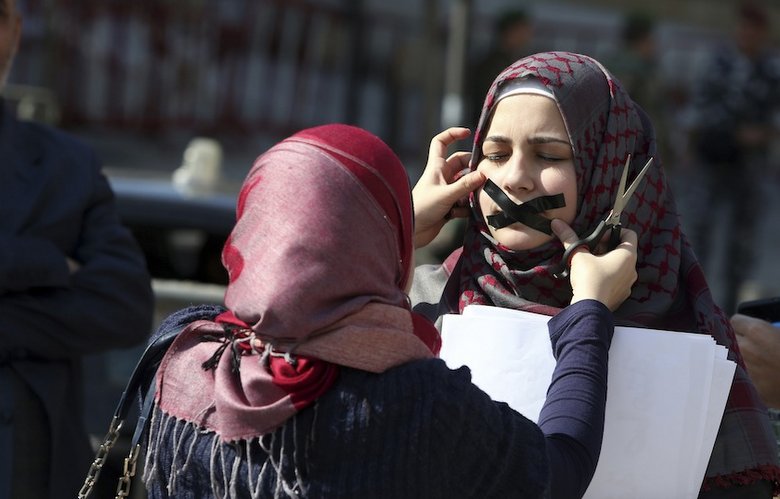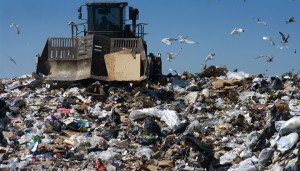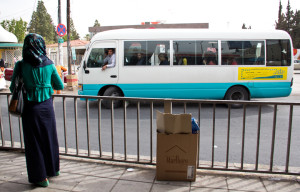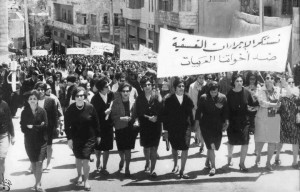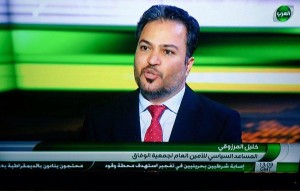Green thinking was not mainstreamed in economic development models in countries of the Middle East till the late 1980s. After the Earth Summit in 1992, the globe witnessed a wave of environmentalism, and funding was channeled to developing countries to address environmental risks from pollution control to awareness and pilot projects. Agenda 21 defined plans of actions to meet the sustainability challenges, and many countries started to develop national biodiversity plans like Jordan, Egypt, Yemen, Oman, Kuwait and Qatar. These activities helped the green civil society to flourish in West Asia, including the Gulf states. Besides, the notion of civil society received some attention in the last two decades because many countries in the South were under authoritarian rule, which makes it more challenging for the voice of individuals to be heard.
The concept of sustainable development which emerged in the early 1980s focused on means to improve the quality of life while living within the carrying capacity of supporting ecosystems. However, the region invested heavily in infrastructure after independence in 1960s and 1970s and borrowed the western model of lifestyle and modernization, which resulted in large ecological footprints. This development paradigm was influenced by the prevailing notion in the 1960s that the planet has infinite resources and growth is a key goal for economic development. Later, humans became aware of the finite carrying capacity of the earth, which is to be viewed as ‘Spaceship Earth’. The imagined clash between development and conservation of nature was reconciled by the term “sustainable development” but this concept meant many things and lacked quantified indicators and metrics. Sustainability pertains to a balanced interaction between a population and the carrying capacity of an environment such that the population develops to express its full potential without adversely and irreversibly affecting the carrying capacity of the environment upon which it depends.
Countries in the Gulf region are characterized by fossil energy-based economies with large ecological footprints, and high consumption patterns and standards of living. However, the GCC countries lack adequate legal and institutional enabling environment for civil society engagement. Civil society in the Arab region including green NGOs plays a role in public awareness, species conservation and some advocacy campaigns. Nevertheless, they have a limited role in global environmental issues like climate change. In many cases, some policy makers and scientists in the region seem to perceive environmental conservation as a constraint and they question their responsibility to be part of the solution. This is evident in the policy decisions and positions of some GCC countries in the climate global debate.
The key role for a green movement is to influence policy makers and the public so as to ensure environmental stewardship and responsible development. Also, the green movement is keen to transform society to a low-carbon economy and to decouple economic growth from high dependence on fossil energy. This requires a fundamental shift in consciousness as well as in action. The “stagnation of power” in the region and the absence of turnover of ruling elites is the cause of the failure of these regimes. Although the state-based environmental institutional setup exists, civil society and environmental NGOs have a limited presence and role in policy making processes. A good example is that Jordan’s social and economic council has no representatives from the environmental sector.
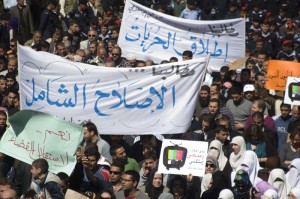 However, the beginning of 2011 witnessed an Arab awakening starting in Tunisia and Egypt, referred to as the Arab Spring. This wave of democracy was led by youth and civil society movements with “rainbow coalitions” who are demanding more transparency, good governance and reform. I do believe that any genuine reform in governance and human rights will contribute to a new discourse in green movement and sustainability. The question is how these reforms in the Arab region will inform and transform a new green movement that can articulate a new message that is all-encompassing and inclusive of both the human and environmental agenda. The key message is clear and simple:
However, the beginning of 2011 witnessed an Arab awakening starting in Tunisia and Egypt, referred to as the Arab Spring. This wave of democracy was led by youth and civil society movements with “rainbow coalitions” who are demanding more transparency, good governance and reform. I do believe that any genuine reform in governance and human rights will contribute to a new discourse in green movement and sustainability. The question is how these reforms in the Arab region will inform and transform a new green movement that can articulate a new message that is all-encompassing and inclusive of both the human and environmental agenda. The key message is clear and simple:
To ensure a sustainable human civilization we need both social justice and environmental sustainability. Human rights and the right for a safe environment are inseparable.
The disarray of civil societies in the Arab region is seen as linked to the unconditional Western support for existing non-democratic regimes. This paradigm changed in early 2011 where youth and civil society in many countries in the Arab region including Tunisia and Egypt succeeded in changing the political regime, and in demanding freedom, dignity and human rights. This Arab Spring requires a green movement that is able to frame and articulate a new discourse for sustainable development that encompasses good governance, human livelihood and human rights along with the economic, social and environmental pillars of sustainability. Civil society organizations are seen as “building blocks for a future democratic society”.
The UNDP report in 2003 on the state of human rights in the region commented that formal institutions and laws to initiate non-governmental organizations in many countries in the region are limited and restrictive. The right to freedom of association needs to be developed and respected. International conventions, then, have not entered the legal culture of Arab states or been incorporated into national legislation. Moreover, the report concluded that there is a failure in the region to “reconcile the interests of the government with the rights of the people.
Many environmental NGOs in the GCC and West Asia are affiliated with the government and supported by ruling regimes. Thus, civil society organizations are often reluctant to take actions that could jeopardize their relationship with the state. As a result, the ability of civil societies in the Arab world to promote democracy and to challenge the political status quo is largely limited or even nonexistent. In the Arab region, I argue that the civil society has structural limits and constraints in shaping and formulating the state’s policy choices and in influencing global policies in issues like climate change, nuclear energy, disposal of waste, or GMOs.
I view the Arab Spring as an advanced form of green activism (Jihad) which is a struggle against imbalances, injustice, or mischiefs that disturb the “natural state” (fitra). This activism is one form of Jihad to ensure balance and harmony between humans and nature. Transforming the positive energy of youth in the world towards a Green Jihad which supports all principles of equity (adl), beauty (ihasn), saving our social and human capital (arham) and saving our natural capital to support progress and prosperity (emartu al ard).
In sum, the West Asia region and the Middle East region is rich in unique cultural heritage, biodiversity, marine environment, protected areas and world heritage sites that need to be preserved to support and nurture our human livelihood and well being. The Arab Spring requires the renewable energy of all people to sustain the momentum to ensure a just world that values and protects humans and nature.
—–
*Regional Director, IUCN- International Union for Conservation of Nature
